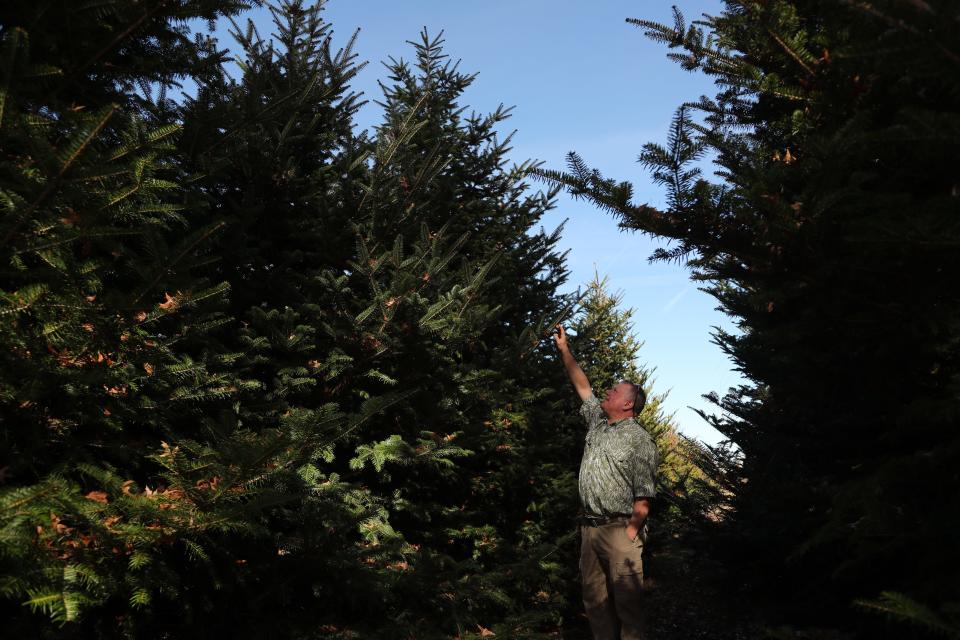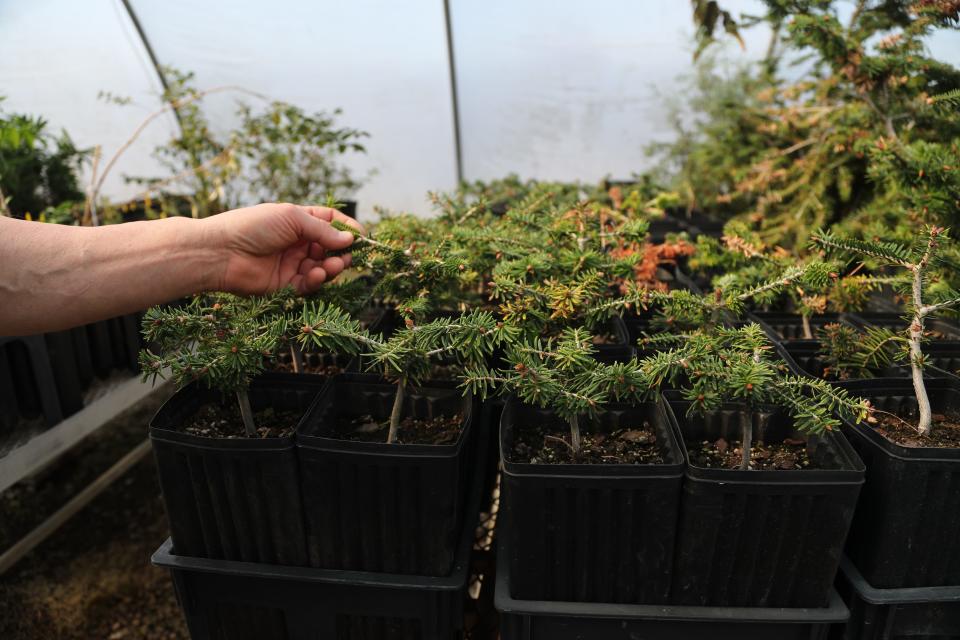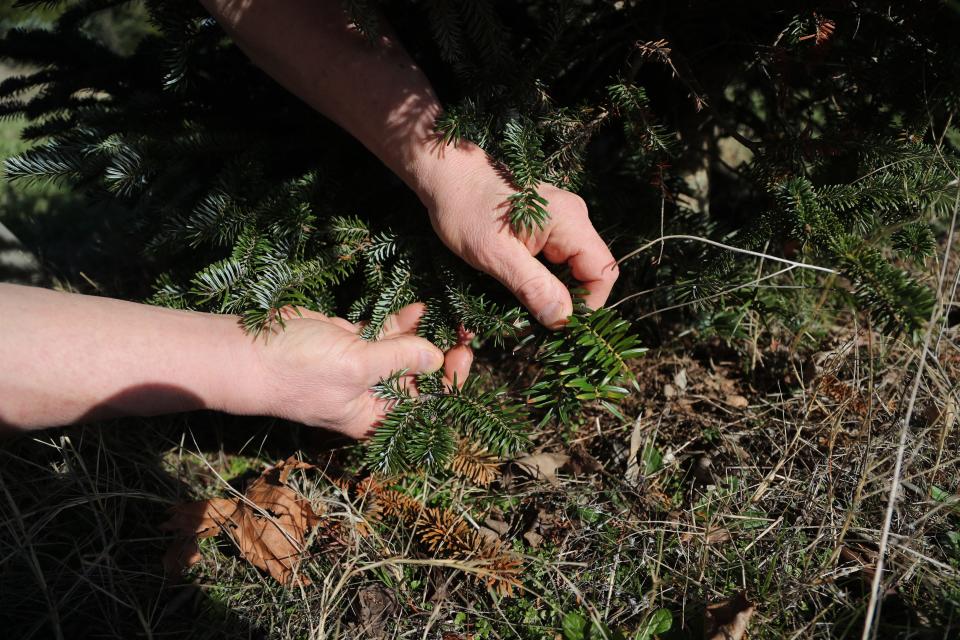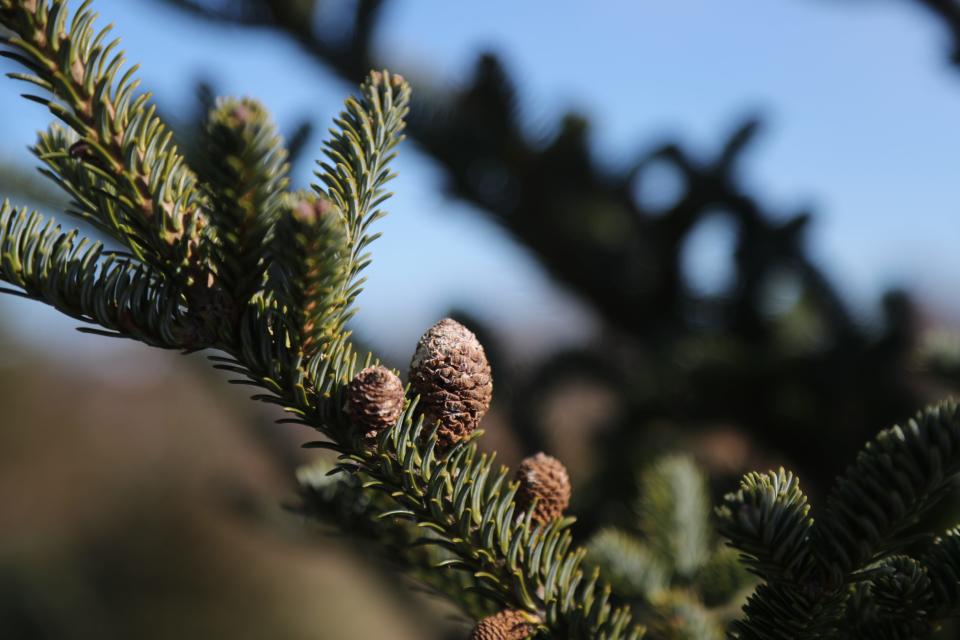Fungus has contributed to high prices of Christmas trees. Georgia researches may have a solution
Christmas tree prices continue to climb.
Last year, U.S. customers paid an average of about $80 for a real tree, according to the National Christmas Tree Association. That was up from $70 in 2021 and $66 five years ago.
But there’s more to the trend than overall inflation.
Climate change is among the contributors to escalating costs for fresh-cut trees.
Extreme rainfall and periods of drought tied to overall warming temperatures have created ideal conditions for the root fungus Phytophthora, which impacts most varieties of trees sold for Christmas display in Georgia.
“Once that disease is in the soil, it's there forever,” explained Mark Andrew Czarnota, associate professor and extension specialist at the University of Georgia whose fields of interest include the study of Christmas trees. “The tree will start to die, start losing limbs and it becomes unsellable as a Christmas tree.”
Susceptible tree species will never grow in ground overtaken by Phytophthora.
The fungus has especially become the scourge – if not the Scrooge – of Fraser firs, the most popular Christmas tree in the U.S.
That’s important in Georgia because more than half of live Christmas trees sold here come from out of state, and most of those are Fraser firs raised in North Carolina, which provides the unique habitat needed for their survival.
Native Frasers, which can grow to heights of up to 80 feet, are found exclusively near the tallest mountain peaks in southwest Virginia, western North Carolina and eastern Tennessee.
The full, sculpted Fraser specimens we sort through on Georgia pop-up lots are a far cry from most of their typically scrubbier native siblings, whose natural range is at elevations at and above 5,000 feet.
Frasers are grown commercially at lower mountain elevations on farms at about 3,000 feet. But raising those crops successfully outside their natural habitat requires constant care.
The highest natural habitat for Fraser firs is North Carolina’s Mt. Mitchell, which tops out at 6,684 feet and is the tallest point east of the Mississippi River.
Researchers at the N.C. Department of Agriculture’s 454-acre Upper Mountain Research Center have spent decades using science to create the perfect Christmas tree – or at least one that comes close.
The work has involved genetically modifying trees to improve needle retention, smell and other characteristics important to consumers. The culmination of those efforts involves combining the most desirable characteristics of two species to create a single, superior tree.
Through a process of grafting and cross-pollinating, researchers at the center are developing Fraser firs with the root systems of other species that adjust better to weather extremes and are more resistant to diseases, including Phytophthora.
Once in a lifetime: Savannah has only had one white Christmas. Do you remember the historic day?
Hunted holiday? Savannah's only white Christmas featured this ghostlike Santa sighting

Quest for 'endless supply' of resilient Christmas trees
One of those resilient species, the Momi fir, could become a staple crop for Georgia farmers, according UGA’s Czarnota.
The tree is completely resistant to Phytophthora, and its tolerance to heat could potentially allow it to thrive as far south as the Florida line, he added as he walked among hundreds of trees in a field near UGA’s Griffin campus.
However, Momi seeds are hard to find and difficult to germinate.
That’s why Czarnota and colleagues, backed by a U.S. Department of Agriculture grant, began “rescuing” embryos from Georgia Momi firs that “could be cultured to produce hundreds of thousands of seedlings in less than six months if (a) propagation system could be developed,” he said.
Even better, Momis could be crossed with other Georgia-friendly species to combine their best characteristics.
“It could provide an endless supply of a Phytophthora-resistant hybrid fir trees for the Christmas tree, ornamental and forestry (industries) in Georgia and the Southeast,” Czarnota said. “This could open up fantastic financial opportunities for all of these industries.”
To do that, Momi fir pollen released in the spring would be placed on female cones of trees covered to prevent pollination from other species.
“Hybrid cone embryos then would be harvested and cultured to produce embryos and eventually seedlings,” Czarnota explained.
Czarnota is seeking a grant to help fund the effort.
“With any luck, these hybrids will be Phytophthora resistant, and forever change our abilities to grow firs,” he said. "We just don't have enough people growing these trees for sale for people to purchase."
The Georgia Christmas Tree Association lists 50 Christmas tree farms currently in the state.
John Deem covers climate change and the environment in coastal Georgia. He can be reached at jdeem@gannett.com.



This article originally appeared on Savannah Morning News: Georgia researchers look to create climate-resilient Christmas tree

